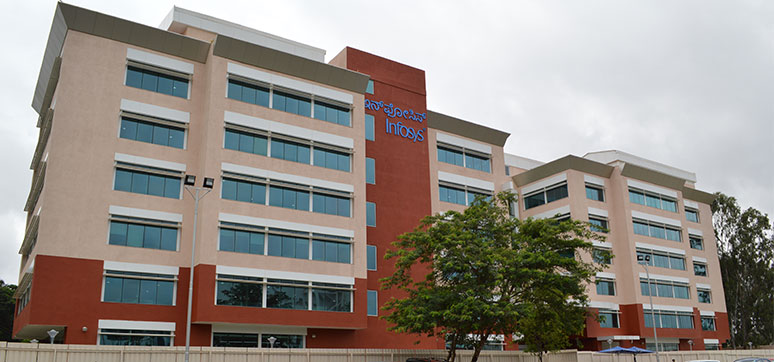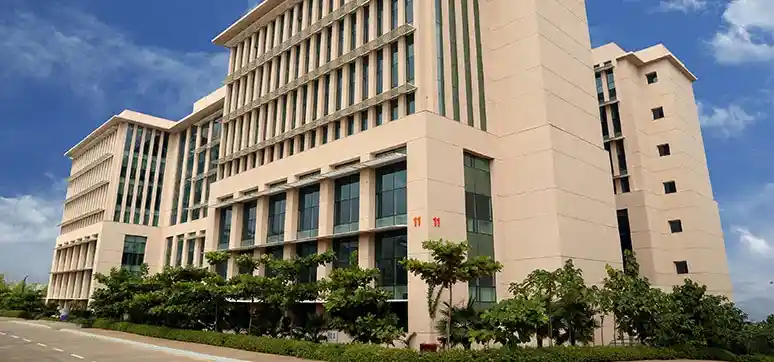According to the United Nations, more than one half of world population now lives in urban areas. Urbanisation is increasing in all countries of the world. It is known that there is a clear link between urbanisation and environment. This is evident from the fact that cities have high demand for resources and have higher pollution levels compared to rural areas. So, it is important to ensure the new infrastructure, especially buildings are environmentally sustainable.Buildings account for one-third of global energy use, and significantly high carbon emissions. Considering the fact that a large fraction of buildings is going to be built in the coming years globally, it becomes imperative to follow sustainable building design strategies to minimise the environmental footprint. Buildings need to be designed in the right way from the concept stage to achieve high efficiency and minimal cost.
Air conditioning accounts for nearly half of the energy consumption in a typical office building. The building façade can contribute to anywhere between 20-50 per cent to the air conditioning energy consumption in a building. This means the building façade accounts for 10-25 per cent of the total building energy consumption and is one of the single biggest contributors. So, a careful design of building façade is necessary to ensure an efficient building.
Façade is the outer skin of the building that acts as a barrier between the interior and exterior. The primary purpose of the façade is to protect the occupants from outdoor weather conditions, and provide a comfortable living or working space. There are a few points the design team needs to discuss with all stakeholders and be clear about before finalising the façade of a building. All stakeholders of the building need to understand that design of the façade cannot be an independent activity. It has to be a holistic design approach where the impact of different design elements of the building (including façade) is studied in relation to each other and on the comfort of occupants and total building energy consumption. Most importantly, the façade needs to adapt to the local climatic conditions to effectively serve its purpose.

1. Form Vs Function
It is often a designer’s dream to have a building that has a unique language/ character. It is incorrect to conceive the form of the building/building façade without studying the functional aspects. While requirements like heating or cooling depend on the climate of the location, requirements like natural light, views, etc. are dependent on the functionality of the spaces inside the building. The designer may come up with a fully glazed façade, which may be good for cold climates that need to welcome the sun inside the building for most of the year, but may be disastrous for tropical climates that require cooling for most of the year.
The functionality of the building with respect to occupants should be more important than the design from outside. There may not be much sense in having a fully glazed building that may look appealing and “futuristic” from outside, but people inside experience problems of glare and thermal discomfort. So, while designing a building façade, though it is important to have an aesthetic appeal on the exterior, what matters most is the comfort of the people living or working inside. So, the priority in design should always be function over form. Creative designers can find several ways to balance function and form by having appropriate orientation, window-wall ratio, shading, insulation and right material selection.
2. Ease of Installation Vs Essentials
In the building industry globally, any decision on approval of projects takes a long time, at the leisure of the management, but once the approval is given, there is an unfathomable hurry to get the project completed. This actually results in compromising on essential aspects like safety, energy efficiency, poor detailing of several building elements, cutting corners to make installation easier and quicker, etc. Installation of façade is a one-time process for a building, and if done in the right way ensures safety and sustainability of the façade for the life of the building. Safety should be of prime importance while designing a façade in terms of structural safety as well as fire safety. Structural safety can be ensured through right design calculations and specifying the right material for the job. Fire safety requires right detailing to ensure there is no possibility of a fire hazard, appropriate use of fire retardant material and isolation of any combustible material, more so in case of high-rise buildings.
An example to learn from is the unfortunate fire in a London building a few months ago. It was shocking to know that a fire that presumably started in a fourth floor kitchen could burn almost the entire façade on all sides of the 24-storey building. The façade material was suspected as one of the main causes for fire to spread and some investigations pointed to cavities in the façade system leading to the fire spreading quickly. So, right detailing and selection of material is essential for ensuring fire safety.
Another essential aspect – sustainability needs to be considered to ensure the building façade is efficient and contributes to low operating costs for the lifetime of the building. Insulating the walls and roof, high performance glass and shading for windows should be integrated with the regular façade construction so as to maintain ease of construction, and at the same time reduce the requirement for lighting and air conditioning during operation of the building.
In high-rise buildings where introduction of exterior shading elements might be a challenge, one option is to consider a double façade that can act as a ventilated façade as well as achieve the effect of shading. All it needs is a small effort from the project team to ensure safety and sustainability of the building façade. So, the priority in design should always be essential over ease of installation.
3. Cost Vs Benefit
Table-1: Performance parameters of Infosys buildings
| Dimensions (inches) | Performance metri | Infosys design 2007-08 | Infosys new desig | Improvemen |
| 1 | Total building energy consumption (EPI*) | 200 kWh/sq m/ year | 75 kWh/sq m/year | 62% |
| 2 | Lighting design | 1.2 W/sq ft | 0.48 W/sq ft | 60% |
| 3 | Air-conditioning design (Reduction in heat load) | 350 sq ft per TR | 750 sq ft per TR | 53% |
| 4 | Total building electrical design | 6.5 W/sq ft | 3.5 W/sq ft | 46% |
Cost always plays a critical role in decision making for any building project. Introduction of any element like insulation, shading, etc. on the façade is treated as an additional cost that requires justification. But if the cost details are studied holistically for the entire project rather than façade alone, then in most of the cases, one would end up with no additional cost for the overall project. The benefit of adding insulation and shading on the façade is actually seen in the air conditioning capacity reduction, which also leads to reduced electricity demand and lower capacity electrical systems. In some cases, an efficient façade reduces the cost of air conditioning and electrical systems to an extent that there is an effective reduction in the overall project cost.
Case Study – Infosys Buildings
The office buildings of Infosys over the last nine years have followed a holistic design approach and have set benchmarks for energy efficiency. Prior to 2008, the energy performance index (EPI) of Infosys buildings used to be about 200 kWh/sq m per annum. Through a focused approach to energy efficiency, the new designs from 2008 onwards included a very efficient façade, innovative lighting and air conditioning design and automation, as a result of which the EPI has been reduced to 75 kWh/ sq m per annum. The new buildings of Infosys are 60 per cent more efficient compared to older designs with no extra capital cost.
Efficient façade was the single biggest contributor to achieving high performance buildings. Infosys moved away from glass buildings to rightly designed buildings with optimum window-wall ratio that ensures minimum heat gain but adequate natural light. The data given in table-1 shows the reduction in critical operational parameters as well as those affecting capital cost. 53 per cent lesser air-conditioning capacity meant a huge reduction in capital cost of air conditioning as well as electrical equipment.
Infosys buildings demonstrate clearly the advantages of adaptive sustainable facades on overall building performance and capital costs. It is wise for the project teams to weigh the benefits and make a smart choice of façade adating to each situation, so that future urbanisation is less harmful to the environment.














